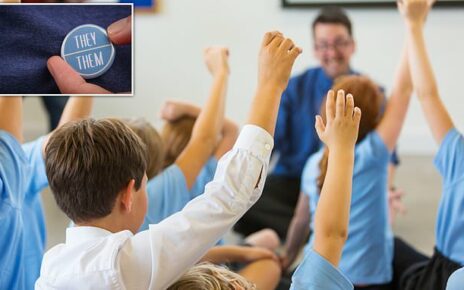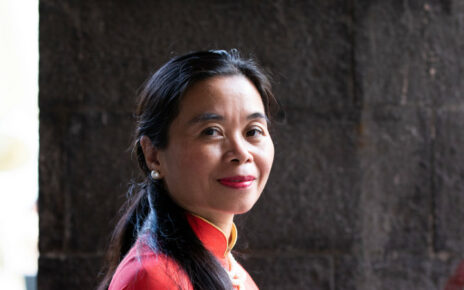Written by Katie Rosseinsky
Finding and maintaining a best friend is something we seek out from childhood. It turns out it’s a crucial part of being human, writes Katie Rosseinsky.
Rachel Green and Monica Geller. Blair Waldorf and Serena van der Woodsen. Thelma and Louise. Clueless’s Cher and Dionne. The pop culture pantheon is replete with best friend duos: pairs who would do anything for their platonic soulmate, operating on the same elusive frequency and speaking the same secret language of in-jokes and shared memories.
You may well have felt some of that magic in real life too. A 2020 study by researchers at Oxford University found that 98% of women have a best pal, compared to 85% of men; even if you’d struggle to single out one of your nearest and dearest as your top choice right now, you might have experienced that all-consuming closenesswith one person when you were younger. But how do we form that much-mythologised BFF bond, and what’s behind our desire to elevate one close pal above the rest?
Dr Anna Machin, author of Why We Love: The New Science Behind Our Closest Relationships, is an evolutionary anthropologist who specialises in the study of close human relationships, and worked on the aforementioned Oxford University study. A best friend, she explains, occupies the very core of our social network, known as the central support clique. In this ‘clique’, you would also expect to find our nearest family members, partner or children – but unlike those relationships, Machin says, our attachment to our best friend is not rooted in ‘duty’. Instead,much like a romantic partner, our bestie is one of the close connections we actually get to choose.
When it comes to finding ‘the one’, the sociological theory of homophily suggests that we gravitate to people like us: research backs up the old truism that ‘birds of a feather flock together’.The 2020 Oxford study concluded that likeness was even more important in close female friendships than in male ones, with women valuing similarity in personality traits including dependability, kindness, mutual support and sense of humour.
There are no shortcuts to best friendship; instead, closeness like this requires both of you to put the hours in. In 2018, a study by academics at the University of Kansas discovered that, on average, it takes more than 200 hours of time together before you consider someone your top pal (to graduate from acquaintance to casual friend, meanwhile, takes a quarter of that time). Perhaps that’s why so many of us forge these bonds as teens or in early adulthood. These are life stages when we have the luxury of time – and when the rest of our ‘central support clique’ might struggle to understand us quite so well. “Our best friend is one of our key attachment relationships, particularly as an adolescent when your primary attachment shifts from your parents to your peers,” Machin says.
Mirroring gestures, speaking with the same intonations or adopting those hyper-specific in-jokes that leave outsiders baffled – all of these are hallmarks of a tight connection. What’s more surprising, though, is the fact that our physiological responses, like heart rate and blood pressure, also start to move in tandem with our best friends too, thanks to a phenomenon known as biobehavioural synchrony.
There’s even evidence to suggest that we don’t just act like our besties – we process the world in the same way. In 2018, psychologists at UCLA used MRI scans to examine how close friends reacted when they were watching the same video clips; the resulting images showed that BFFs had “exceptionally similar” neural responses. The researchers could even predict the strength of a social bond just by looking at these scans. It really is possible, then, to find someone that’s truly on your wavelength.
No wonder best friendships tend to be the most accepting and non-judgmental in our social circle, Machin says. This openness, she adds, means that we tend to be more emotionally intimate with our female best friend than anyone else – even our romantic partners. “We will tell them more and reveal more to them than any other friend,” she explains. “This emotional intimacy creates a very tight bond which generally places this relationship on a different level to other friendships.”
Best friends can be their ‘real selves’ with one another, agrees Best Friends Forever: Surviving A Break-Up With Your Best Friend author Dr Irene Levine, a clinical psychologist and founder of The Friendship Blog. “There is an element of trust that allows best friends to be fairly honest without being judged or misunderstood,” she says. “The relationship is also balanced in terms of give and take over time. One person isn’t consistently on the giving or taking end.”
Even after spending time apart, it’s easy to fast-track back to closeness with your best pal, speedily getting back onto that same frequency with none of the awkward small talk you might have to wade through with others (it’s a phenomenon that my close circle has christened “progressing, not regressing”). A strong bond like this doesn’t require the same level of maintenance as others might: “We can get away with making a little less effort than more unstable relationships,” as Machin puts it.
A handful of theories have been put forward to unpick the evolutionary impulses behind human friendship. There’s the idea of reciprocal altruism – we help others with the expectation that they will do the same for us when the time comes. Then there’s the alliance hypothesis, which suggests that we’re prone to gathering allies for potential disputes (if you came of age in the mid-00s, you’ll know that curating your MySpace’s Top 8 with military precision certainly felt a lot like assembling an alliance). And yet the jury is out when it comes to pinning down the exact reason why we have best friends.
Still, our bodies have evolved to value these bonds. When we have those frank, open conversations with our best friend, it activates the body’s reward circuits; the love hormone oxytocin is released. This response encourages us to have similar interactions over and over – so that we get the same positive effect; in women, this release of oxytocin has been shown to reduce activity in the amygdala and insula (parts of the brain which help us process emotions and are sensitive to negative stimuli). We wouldn’t have evolved to encourage and prioritise closeness in this way “if those relationships weren’t critical for survival”, Machin previously told The Observer.
And yet to see BFF-dom as a singularly positive thing would be to oversimply it. The concept can be “really knotty and complicated” with “a lot of potential for hurt” built in, as Dr Jenny van Hooff, reader in sociology at Manchester Metropolitan University, tells Stylist. She argues that our yearning for one best pal is “imprinted particularly on girls” by the way we are brought up. “We’re taught about ‘best friends forever’ from a young age,” she says – and we soon learn that to be feminine is to have close friends. Just think of the interlocking heart necklaces you eyed up in Claire’s Accessories as a tween. “For girls, relationship success is a marker of success,” van Hooff adds, and so our best friend can be “an endorsement of our own popularity or self” – there is an element of external validation at play in that rush of being picked by another person.
The potential for hurt can materialise, though, when we place a really unrealistic ideal on friendships – expecting them to be at our beck and call, day or night, just like the women we grew up watching on Friends or Sex And The City. When our heightened expectations aren’t met, feelings of resentment or even betrayal might start to emerge.And if we don’t have a clearly defined bestie? “It can make people feel like a failure if they don’t achieve that,” van Hooff says.
Levine agrees: “Too often, women idealise the concept of a best friend as a perfect relationship, but that’s rarely the case.” Instead, she adds, “We may have one best friend who understands our past, a best friend who understands our problems and a best friend who shares our ambitions or passions.” As we get older, it’s a model of friendship that – anecdotally at least – seems to make increasing sense. Our lives inevitably become less intertwined, our interests more disparate.
Just as everyone will have a different vision of what makes a best friend, it’s a concept that people subscribe to in different ways, placing more or less value on the ideal. Van Hooff thinks that “best friend” can be a quite limiting term, because it “assumes that one person can fulfil” all roles. Instead, she cites a quote from Mindy Kaling’s sitcom The Mindy Project: “Best friend isn’t a person – it’s a tier.”
Images: Getty
Source: Read Full Article


